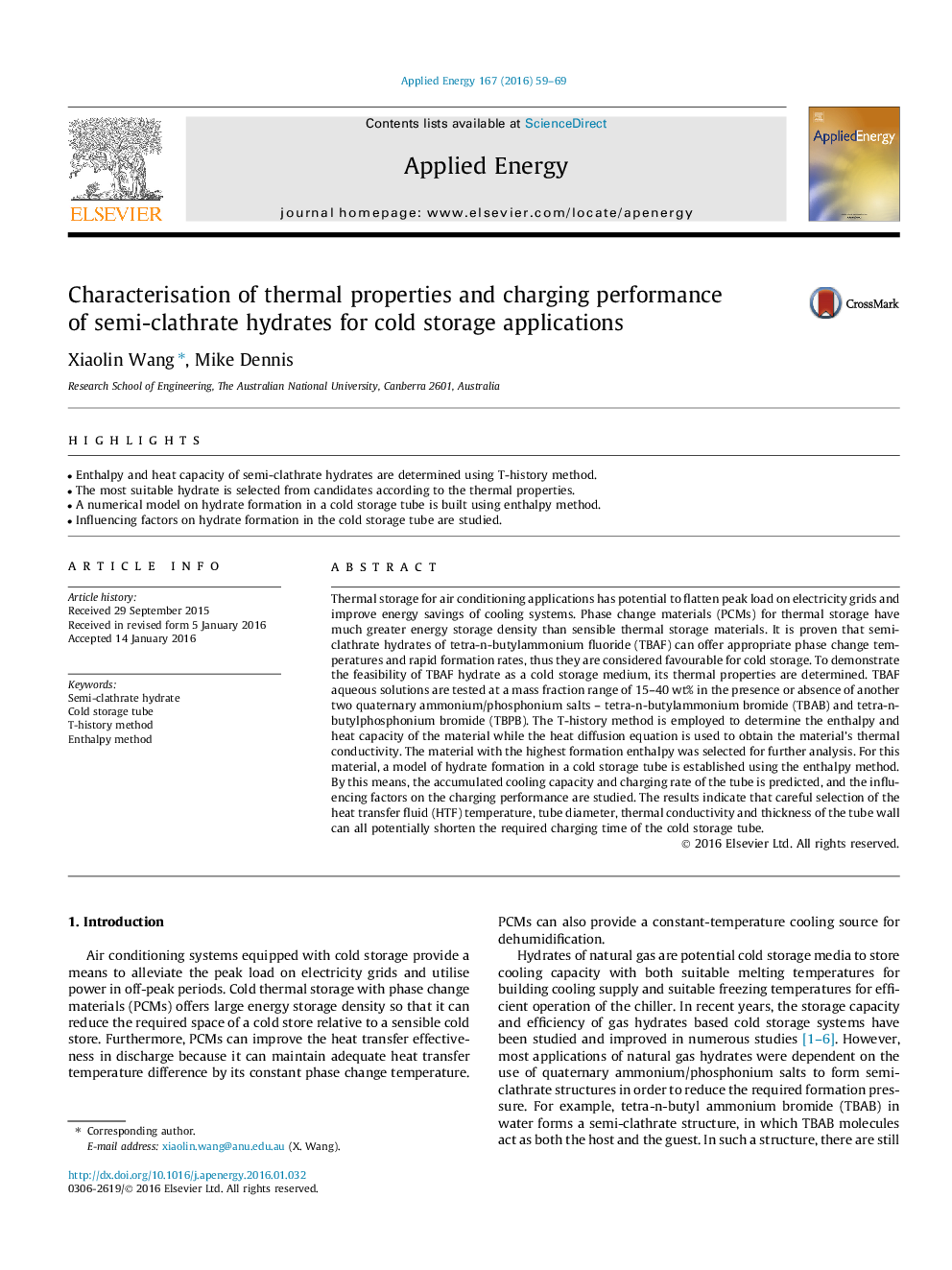| Article ID | Journal | Published Year | Pages | File Type |
|---|---|---|---|---|
| 6683705 | Applied Energy | 2016 | 11 Pages |
Abstract
Thermal storage for air conditioning applications has potential to flatten peak load on electricity grids and improve energy savings of cooling systems. Phase change materials (PCMs) for thermal storage have much greater energy storage density than sensible thermal storage materials. It is proven that semi-clathrate hydrates of tetra-n-butylammonium fluoride (TBAF) can offer appropriate phase change temperatures and rapid formation rates, thus they are considered favourable for cold storage. To demonstrate the feasibility of TBAF hydrate as a cold storage medium, its thermal properties are determined. TBAF aqueous solutions are tested at a mass fraction range of 15-40Â wt% in the presence or absence of another two quaternary ammonium/phosphonium salts - tetra-n-butylammonium bromide (TBAB) and tetra-n-butylphosphonium bromide (TBPB). The T-history method is employed to determine the enthalpy and heat capacity of the material while the heat diffusion equation is used to obtain the material's thermal conductivity. The material with the highest formation enthalpy was selected for further analysis. For this material, a model of hydrate formation in a cold storage tube is established using the enthalpy method. By this means, the accumulated cooling capacity and charging rate of the tube is predicted, and the influencing factors on the charging performance are studied. The results indicate that careful selection of the heat transfer fluid (HTF) temperature, tube diameter, thermal conductivity and thickness of the tube wall can all potentially shorten the required charging time of the cold storage tube.
Related Topics
Physical Sciences and Engineering
Energy
Energy Engineering and Power Technology
Authors
Xiaolin Wang, Mike Dennis,
